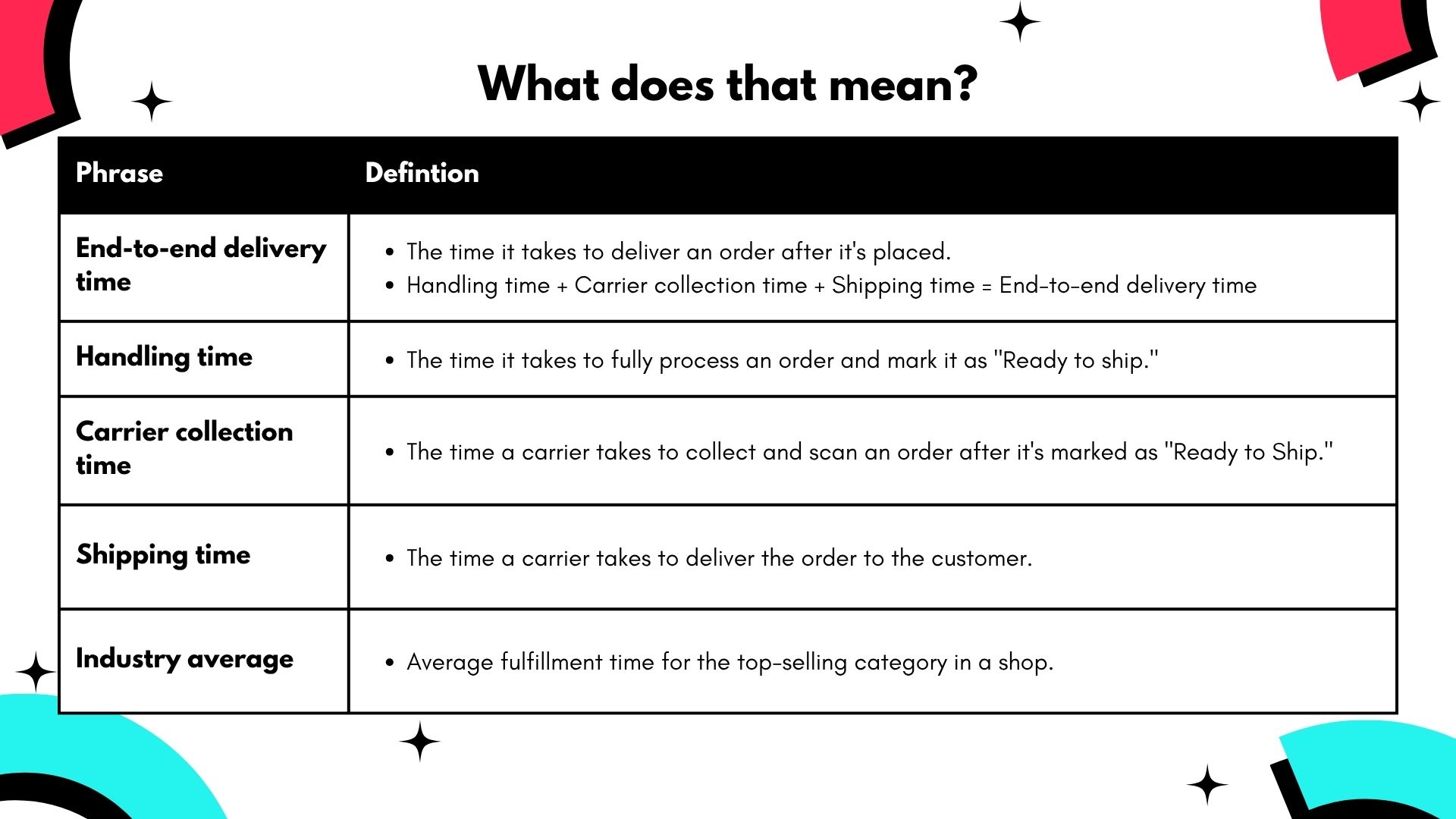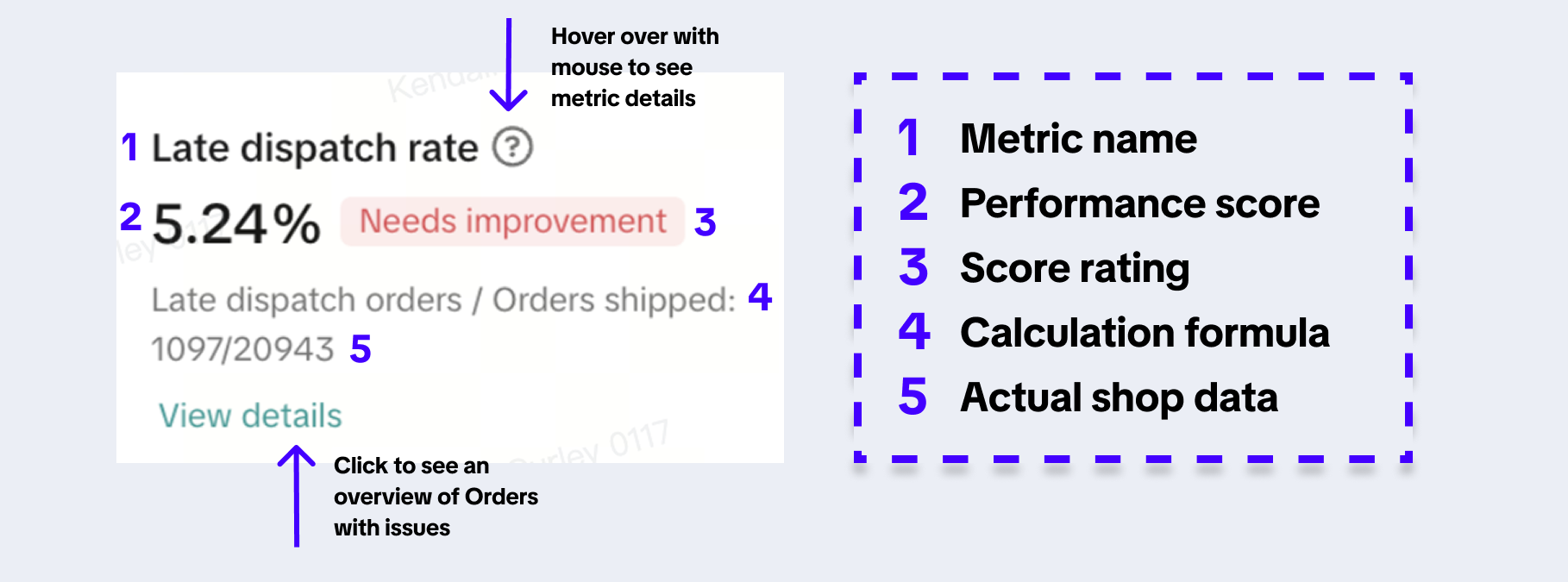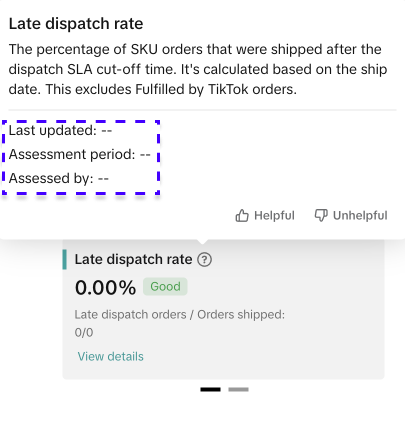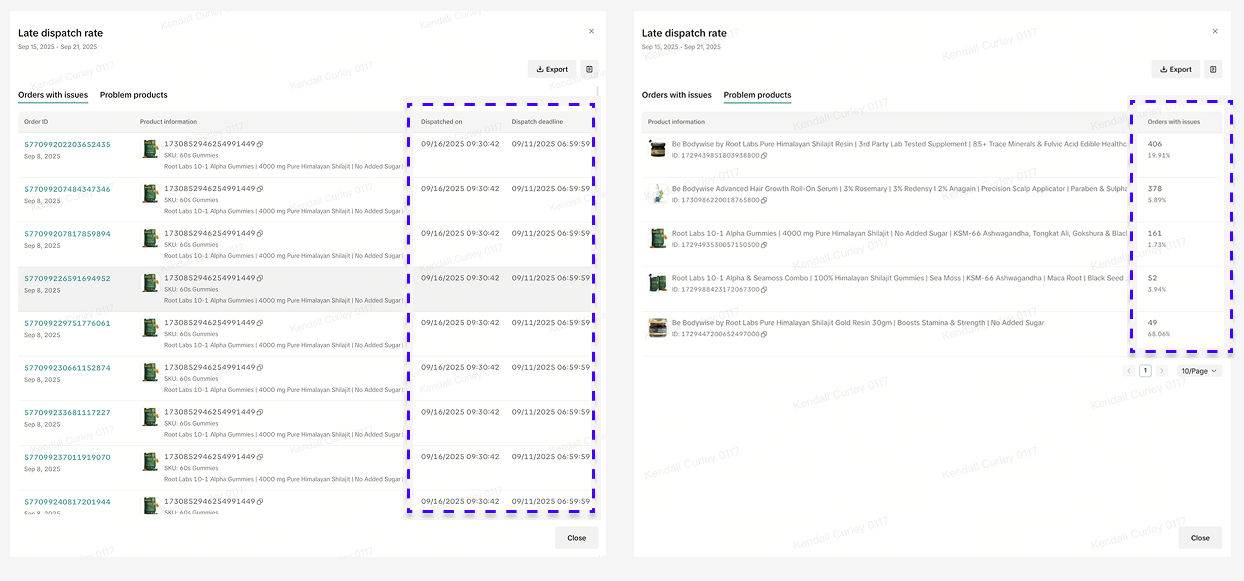Guide to Fulfillment Analytics Page
10/24/2025
Summary
What is the purpose of the TikTok Shop Fulfillment Analytics page and what key data does it provide to sellers?
- The Analytics page offers an overview of fulfillment efficiency, showing average fulfillment times, six key performance metrics, and comparisons against industry standards to help sellers monitor and improve order fulfillment.
Which specific fulfillment performance metrics does TikTok Shop track and why are they important?
- Metrics include On-time Delivery Rate, Late Dispatch Rate, Valid Tracking Rate, Seller-Fault Cancellation Rate, Unshipped Order Rate, and Out-of-Stock Cancellation Rate; OTDR and SFCR impact Shop Performance Score and Account Health Rating.
How can sellers use the detailed metric views and trend charts to identify and resolve fulfillment issues?
- Sellers can view problem orders or SKUs causing issues, track trends over time against industry benchmarks, and drill down into daily data to pinpoint and proactively address fulfillment bottlenecks.
What actionable recommendations does TikTok Shop provide to help sellers improve their fulfillment performance?
- Tips include dispatching orders on time, extending fulfillment SLAs if needed, activating Fulfilled by TikTok (FBT) to outsource logistics, and managing stock accurately using inventory health indicators to reduce cancellations and delays.
How frequently do fulfillment metrics update on TikTok Shop, and how should sellers interpret these updates?
- Metrics like OTDR, Late Dispatch Rate, Valid Tracking Rate, and Seller-Fault Cancellation Rate update weekly (Mondays), while Unshipped Order Rate and Out-of-Stock Cancellation Rate update daily, enabling timely monitoring and response.

Your fulfillment performance is a key component of your shop's overall health. It not only impacts customer experience and trust, but it also affects your shop's Account Health Rating and Shop Performance Score (SPS).
We've built the Analytics page in Seller Center to help provide an easy-to-read overview of your fulfillment efficiency and performance. On this page you can view:- Average fulfillment timelines (from order creation to delivery)
- TikTok Shop fulfillment performance assessment metrics
Where to find it
To see your Analytics page on fulfillment, follow these steps:- Go to Seller Center
- Click on Analytics (located above Account health in the menu)
- Click on the Post purchase tab
- Then click on the Fulfillment tab
What you'll see
Here's an example of what your Analytics page will look like:- Average fulfillment time
- Fulfillment performance metrics
- How to improve fulfillment performance
Average Fulfillment Time
 NOTE: Fulfillment time is measured in hours.The first section is called, Average fulfillment time. This section displays your average fulfillment processing time during a 7-day period (you can also adjust the time period to 28 days using the time picker).
NOTE: Fulfillment time is measured in hours.The first section is called, Average fulfillment time. This section displays your average fulfillment processing time during a 7-day period (you can also adjust the time period to 28 days using the time picker). You can use this section to get a bigger picture of how efficient your fulfillment processes are. You can compare your performance to industry standards or do a period-over-period comparison.

What do the green and red colors mean?
The Average fulfillment time not only displays performance metrics from the last 7 days (or 28 days), it also compares those metrics to the preceding 7-day period (or 28-day period). Red = Your fulfillment efficiency dropped by X hours
Red = Your fulfillment efficiency dropped by X hoursGreen = Your fulfillment efficiency improved by X hours
To toggle between 7 days and 28 days, you can use the time picker dropdown next to Date.
 NOTE:The time picker feature only applies to the Average fulfillment time module. It does not adjust the Fulfillment performance metrics section.
NOTE:The time picker feature only applies to the Average fulfillment time module. It does not adjust the Fulfillment performance metrics section.Fulfillment Performance Metrics
The second section on the Analytics page is the Fulfillment performance metrics module. This section provides overviews of the six key metrics that TikTok Shop uses to assess a shop's overall fulfillment performance. Fulfillment performance metrics covered:
Fulfillment performance metrics covered:- On-time delivery rate (OTDR)
- Late dispatch rate (LDR)
- Valid tracking rate (VTR)
- Seller-fault cancellation rate (SFCR)
- Unshipped order rate
- Out-of-stock cancellation rate
To learn about how these metrics are calculated, please refer to our Best Practices for Order Fulfillment guide.
Metric Cards Overview
 When you hover over the ? icon, you will be able to see the definition of the metric as well as the dates and timeframes that the data reflects.
When you hover over the ? icon, you will be able to see the definition of the metric as well as the dates and timeframes that the data reflects. 
Metric Performance Details
By clicking on View Details on a specific metric card, you can see summaries for Orders with issues and Problem products.On this page, you'll be able to choose between looking at individual orders or at individual SKUs and identify where the core issues are for that metric. Using this page, you can track fulfillment issues and proactively work to correct them.- Late Dispatch Rate example
- Seller-Fault Cancellation Rate example
Metric Trend Chart
By clicking on a specific metric card, the trend chart will update to show the selected metric within the designated time period. This feature provides a visual of performance trends, so that you can see how your fulfillment performance is trending. On the trend chart, there will be two lines.
On the trend chart, there will be two lines. - The solid teal line will indicate your performance trend for that specific metric.
- The dotted gray line indicates the industry standard performance for the primary product category of your shop.
 How to Improve Fulfillment Performance
How to Improve Fulfillment PerformanceThe final section is dedicated to providing helpful information and tips for improving your overall fulfillment performance.
Each improvement card offers actionable suggestions for how you can improve your fulfillment efficiency.
- Dispatch orders on time: Highlights orders that require urgent action.
- Orders that will exceed the dispatch SLA within 24 hours
- Orders that have already exceeded the dispatch SLA
- Orders that will be cancelled within 24 hours due to late dispatch
- Extend your fulfillment SLA: Shows your on-time and late delivery data from the past 30 days. It also has two buttons that you can choose to click.
- Activate Fulfilled by TikTok (FBT): FBT is a service that takes care of storage, packing, and delivery, so you can focus on sales. FBT orders are not counted towards fulfillment performance metrics.
- Manage stock accurately: Review your Manage your stock page and make sure your set inventory levels are based on actual stock or expected restocks. This helps avoid cancellations or shipping delays and maintain a good performance record. This page also has Inventory Health Indicator (IHI), which is a feature that can help you optimize your inventory management strategy.
Fulfillment Analytics Page FAQs
When do the metrics update?Different metrics update on different schedules. Here's a breakdown of which metrics update on what schedule.These metrics update on Monday of every week:
- On-time delivery rate
- Late dispatch rate
- Valid tracking rate
- Seller fault cancellation rate
- Unshipped order rate
- Out-of-stock cancellation rate

